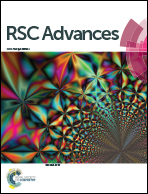Design, preparation and characterization of novel toughened epoxy asphalt based on a vegetable oil derivative for bridge deck paving
Abstract
The aim of this work was to prepare a series of novel toughened epoxy asphalt materials using a natural oil derivative as the main raw material for bridge deck paving. A polymerized fatty acid (PFA) epoxy curing agent was prepared from epoxy fatty acid methyl ester (EFAME) via catalytic ring-opening polymerization and hydrolyzation. Then the novel toughened epoxy asphalt materials with different weight ratios of PFA were prepared. Mechanical tests showed that the prepared toughened epoxy asphalt materials had excellent flexible tensile properties. Micro-morphological investigation showed that the asphalt was dispersed more evenly with the increased PFA content, indicating excellent compatibility between the PFA cured system and asphalt. Dynamic mechanical analysis results showed two phases in the cured compositing system, and the changing trend of Tg indicates the excellent compatibility between the PFA cured system and asphalt. Comprehensive properties comparison showed that all performance parameters of our prepared toughened curing system met the technical requirements for bridge deck paving. Curing behavior research showed that the Ea of the optimal toughened mixed epoxy asphalt curing system was lower and close to the value of the pure epoxy curing system without asphalt.


 Please wait while we load your content...
Please wait while we load your content...